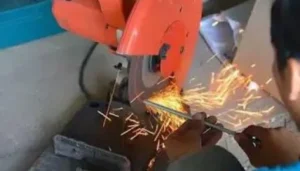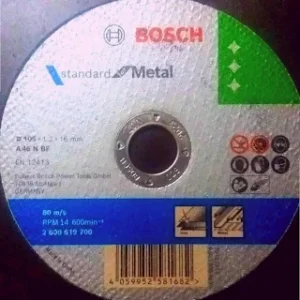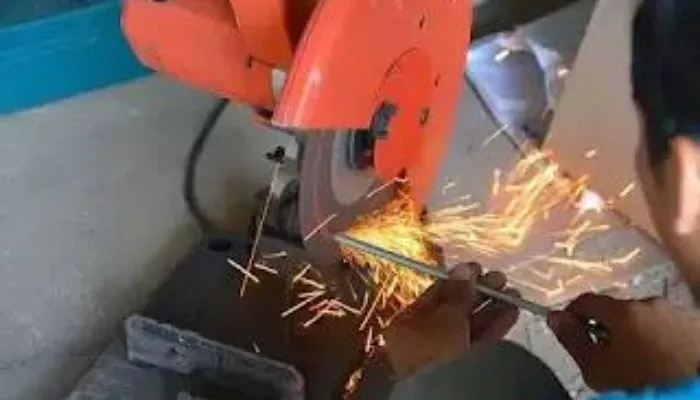Hi everyone! Today’s discussion revolves around grinding wheels, where we’ll dissect their materials, bonds, grain sizes, grades, structures, types, defects, and unravel the secrets of reading their specifications.
The grinding process incorporates the utilization of the grinding wheel, playing a pivotal role in the broader spectrum of manufacturing processes.
You’ve highlighted an essential aspect of grinding wheels – their application across various types of grinding machines, including surface grinding machines, tool and cutter grinding machines, centerless grinding machines, and cylindrical grinding machines. This versatility underscores the importance of grinding wheels in machining processes.
The goal of exploring this subject is to furnish you with the expertise needed to attain impeccable surface finishes, uphold precision in shape and dimensions, hone cutting tool edges, refine cast and welded surfaces, and accomplish a myriad of other tasks with exceptional quality standards.
So, let’s begin by understanding the grinding process, which is facilitated by the grinding wheel.
Grinding Process
The process involves metal cutting, known as grinding, to eliminate excess material and attain the desired surface finish.

Grinding Wheel Definition
Utilized primarily in grinding operations, it functions as a cutting tool to execute cutting tasks effectively.
Grinding Wheel Material
Abrasive
Tough and hard granular materials, known as abrasive particles, are utilized to eliminate the protrusions on workpieces during the grinding process. The selection of these particles is based on the material being ground.
Grinding wheel abrasives
Natural Abrasive
Naturally occurring abrasives are referred to as natural abrasives.
Eg corundum, emery, diamond, etc.
Artificial Abrasive
Artificial abrasives are those that are created through manufacturing rather than occurring naturally.
Aluminium Oxide
Known for their hardness, toughness, and sharp edges, the particles of this abrasive are ideal for grinding carbon steel, mild steel, wrought iron, and die steel. As a result, aluminum oxide abrasive type grinding wheels are extensively employed in industries and factories.
Silicon Carbide
The brittleness of silicon carbide molecules makes it suitable for grinding low tensile strength metals like cast iron, bronze, copper, ceramic, etc., using silicon carbide grinding wheels. Hence, aluminum oxide abrasive type grinding wheels are widely preferred in industries and factories.
Artificial Diamond
Bond/Binders
Bonding involves the strong adherence of materials. It encompasses the use of different abrasive grains like silicate, shellac, rubber, and metal.
Types of bond in grinding wheel
Vitrified Bond
Comprised mainly of feldspar, it is blended with additional refractory substances to establish a durable bond. Immune to water, acids, oils, and standard temperature ranges, it is symbolized by the letter V.
Silicate Bond
Shellac bond
This bonding method involves mixing abrasive particles with shellac, followed by heating.
Resin or Resinoid Bond
It finds its primary application in table grinding, swing grinding, snagging grinding, cam grinding, and various other grinding operations.
Rubber Bond
After mixing the abrasive particles with rubber and sulfur, the mixture is shaped and heated to form the desired grinding wheel.
Metal Bond
It finds application in grinding very hard metals such as tungsten carbide, among others.
Oxychloride Bond
It is utilized without coolant, particularly in industries such as file or razor blade manufacturing.
Reinforced Resin Bond
This bond type is predominantly utilized in manufacturing industries and is represented by the designation BF.
Grain or Grit Size of Grinding Wheel
The dimension of the abrasive particle is referred to as grain size or grit size.
According to IS standards, grain sizes are divided into four groups.
Coarse Size
Medium Size
Fine Size
Very Fine Size
Grade of Grinding Wheel
Soft Grade
When selecting a grinding wheel with a soft grade, you can choose from grades A to H of the wheel.
Soft grade grinding wheels are denoted by letters ranging from A to H.
Medium Grade
Medium grade grinding wheels are denoted by letters ranging from I to P.
Hard Grade
Structure of Grinding Wheel
Open Structure
The structure that incorporates a significant amount of binder to provide separation between the particles is referred to as an open structure.
Close Structure
The structure without separation between the particles is termed as a close structure, where the binder used is in lesser quantity compared to the open structure.
Specification of Grinding Wheel
To specify the grinding wheel, it’s essential to understand the following terms that have been previously discussed. This allows us to comprehend how to read the specifications of a grinding wheel.

Types of grinding wheel
Grinding wheels are manufactured in various shapes and configurations, tailored for specific operations and compatible with different types of machines.
Typically, various types of grinding wheels are available for different applications, including:
Straight Wheel
Tapered Wheel
Cylindrical Wheel
Straight Cup Wheel
Herring cup wheel
Dish Wheel
Saucer Wheel
Diamond Wheel
Grinding Processes
Before grinding, the following operations are typically performed on the grinding wheel:
Defects in Grinding Wheel
Loading
The accumulation of ground chips between the abrasive particles of the grinding wheel is referred to as loading.
